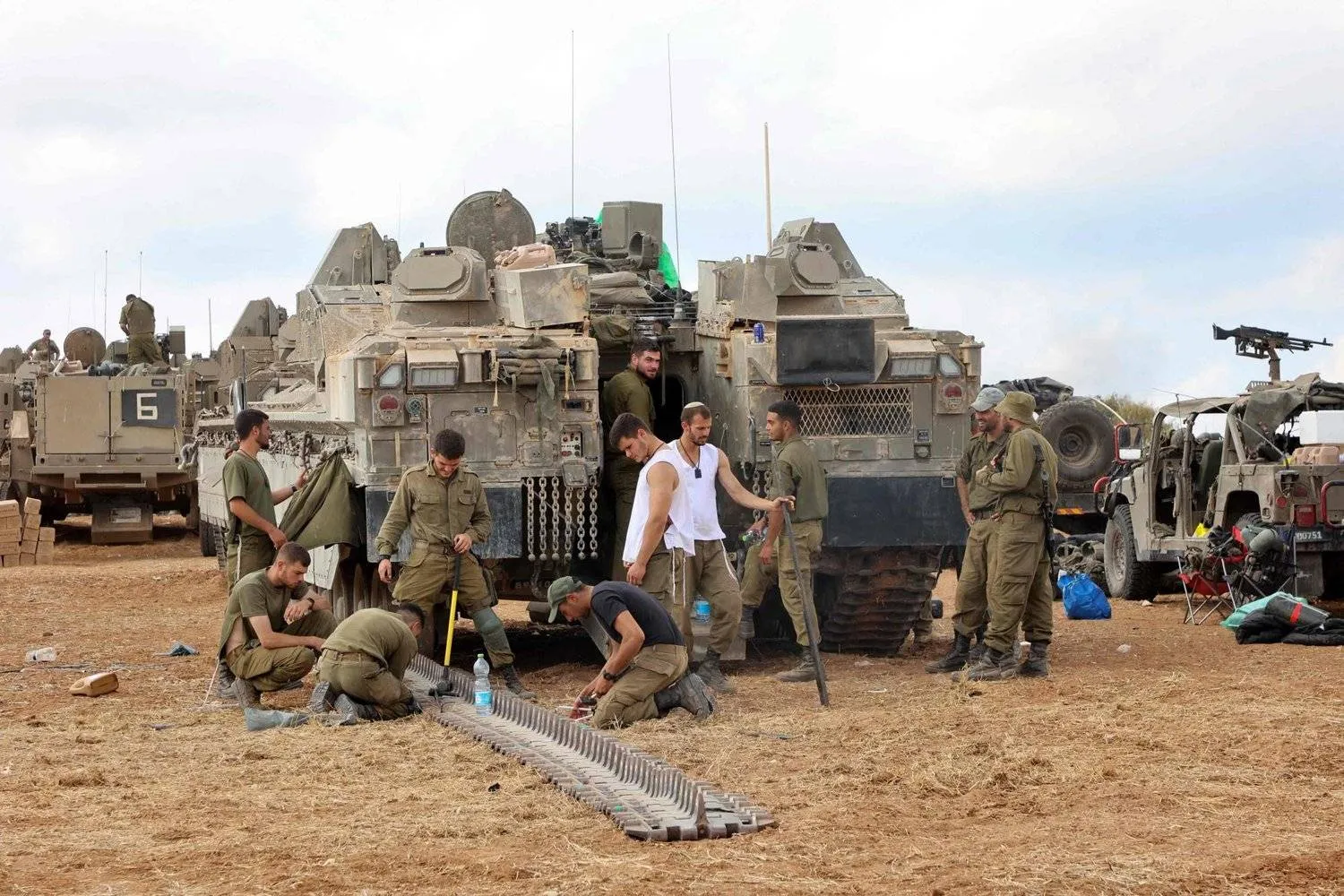A mass shooting in which 15 people were killed during a Hanukkah celebration at Sydney’s Bondi Beach was “a terrorist attack inspired by ISIS,” Australia’s federal police commissioner Krissy Barrett said Tuesday.
The suspects were a father and son, aged 50 and 24, authorities have said. The older man was shot dead while his son was being treated at a hospital on Tuesday.
A news conference by political and law enforcement leaders on Tuesday was the first time officials confirmed their beliefs about the suspects' ideologies. Prime Minister Anthony Albanese said the remarks were based on evidence obtained, including “the presence of ISIS flags in the vehicle that has been seized.”
There are 25 people still being treated in hospitals after Sunday’s massacre, 10 of them in critical condition. Three of them are patients in a children's hospital.
Also among them is Ahmed al Ahmed, who was captured on video tackling and disarming one assailant, before pointing the man’s weapon at him and then setting it on the ground.
Those killed ranged in age from 10 to 87 years old. They were attending a Hanukkah event at Australia's most famous beach Sunday when the gunshots rang out.
Calls for stricter gun laws
Albanese and the leaders of some of Australia's states have pledged to tighten the country's already strict gun laws in what would be the most sweeping reforms since a shooter killed 35 people in Port Arthur, Tasmania in 1996. Mass shootings in Australia have since been rare.
Officials divulged more information as public questions and anger grew on the third day following the attack about how the suspects were able to plan and enact it and whether Australian Jews had been sufficiently protected from rising antisemitism.
Albanese announced plans to further restrict access to guns, in part because it emerged the older suspect had amassed his cache of six weapons legally.
“The suspected murderers, callous in how they allegedly coordinated their attack, appeared to have no regard for the age or ableness of their victims,” said Barrett. “It appears the alleged killers were interested only in a quest for a death tally.”
Authorities probe suspects' trip to Philippines
The suspects traveled to the Philippines last month, said Mal Lanyon, the Police Commissioner for New South Wales state. Their reasons for the trip and where in the Philippines they went would be probed by investigators, Lanyon said.
He also confirmed that a vehicle removed from the scene, registered to the younger suspect, contained improvised explosive devices.
“I also confirm that it contained two homemade ISIS flags,” Lanyon said.
Groups of separatist militants, including Abu Sayyaf in the southern Philippines, once expressed support for the ISIS group and have hosted small numbers of foreign militant combatants from Asia, the Middle East and Europe in the past.
Decades of military offensives, however, have considerably weakened Abu Sayyaf and other such armed groups, and Philippine military and police officials say there has been no recent indication of any foreign militants in the country’s south.
Albanese visits man who tackled shooter
Earlier, Albanese visited al Ahmed in hospital. Albanese said the 42-year-old Syrian-born fruit shop owner had further surgery scheduled on Wednesday for shotgun wounds to his left should and upper body.
“It was a great honor to met Ahmed al Ahmed. He is a true Australian hero,” Albanese told reporters after a 30-minute meeting with him and his parents.
“We are a brave country. Ahmed al Ahmed represents the best of our country. We will not allow this country to be divided. That is what the terrorists seek. We will unite. We will embrace each other, and we’ll get through this,” Albanese added.
Lifeguards praised for actions during massacre
The famous blue-shirted lifeguards of Bondi Beach attracted praise as more stories of their actions during the shooting emerged.
One duty lifeguard, identified by the organization’s Instagram account as Rory Davey, performed an ocean rescue during the shooting after people fled, fully clothed, into the sea.
Another lifeguard, Jackson Doolan, posted to his social media a photo taken as he sprinted, barefoot and clutching a first aid kit, from Tamarama beach a mile away towards Bondi as the massacre continued.
“These guys are community members and it’s not about the surf,” Anthony Caroll, one of the stars of a popular reality television show called “Bondi Rescue,” told Sky News on Tuesday. “They heard the gunshots and they left the beach and came right up the back here into the scene of the crime, into harm’s way while those bullets were being shot.”
Israel’s Ambassador to Australia Amir Maimon visited the scene of the carnage on Tuesday and was welcomed by Jewish leaders.
“I’m not sure that my vocabulary is rich enough to express how I feel. My heart is torn apart because the Jewish community, the Australians of Jewish faith, the Jewish community is also my community,” Maimon said.
Thousands have visited Bondi from all walks of life since the tragedy to pay their respects and lay flowers on a mounting pile at an impromptu memorial site.
One of the visitors on Tuesday was former Prime Minister John Howard, who was responsible for the 1996 overhaul of gun laws and an associated buy-back of newly outlawed weapons.
In the aftermath of the shooting, a record number of Australians signed up to donate blood. On Monday alone close to 50,000 appointments were booked, more than double the previous record, the national donation organization Lifeblood told The Associated Press.
Almost 1,300 people signed up to donate for the first time. Such was the enthusiasm at Lifeblood’s Bondi location that appointments to give blood were unavailable before Dec. 31, according to the organization’s website.
A total of 7,810 donations of blood, plasma and platelets were made across the country on Monday, spokesperson Cath Stone said. Australian news outlets reported queues of up to four hours at some Sydney donation sites.









